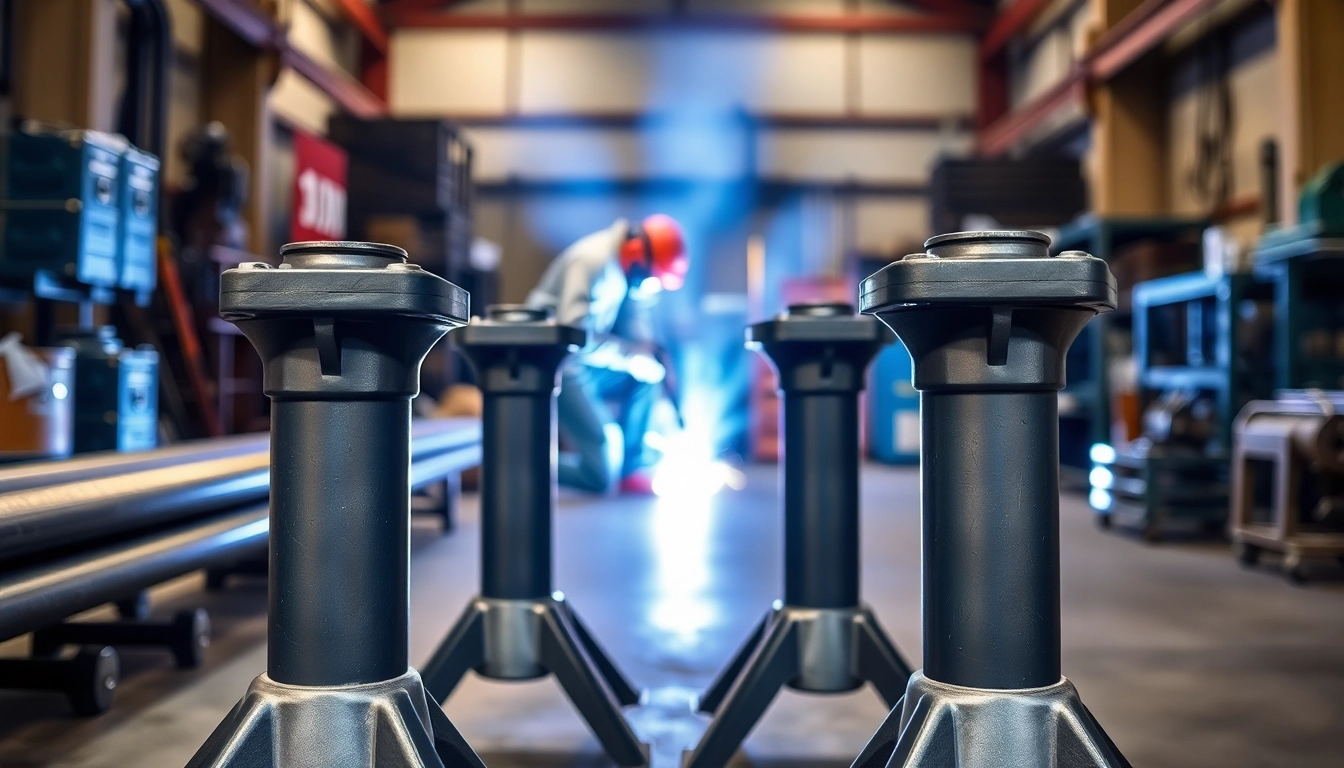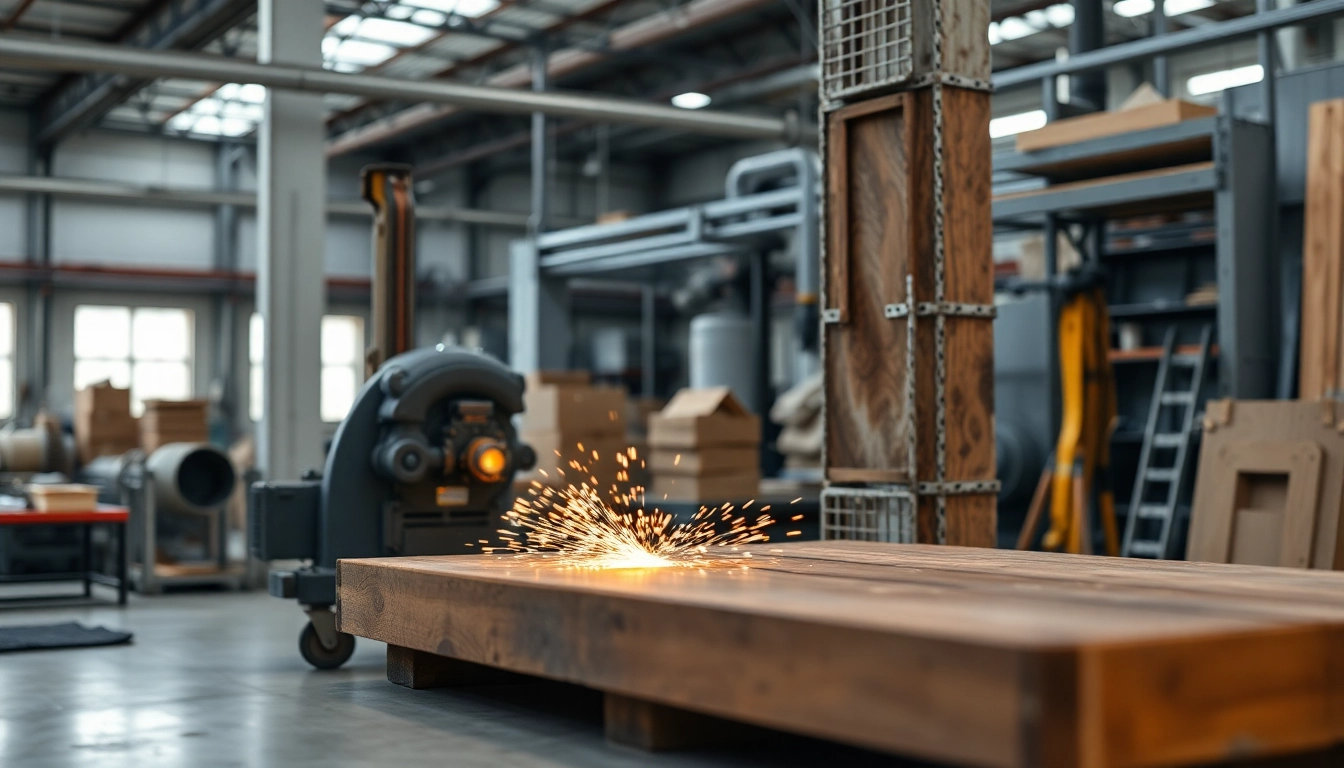Understanding Pipe Stands
In the realm of construction, welding, and industrial applications, the presence of reliable equipment is non-negotiable. One such essential tool is the pipe stand, specifically designed to provide stability and safety during various tasks involving pipes and heavy loads. The term pipe stands pertains to devices that support pipes while they are being cut, welded, or assembled, ensuring that the workflow is smooth and hazard-free.
What Are Pipe Stands?
Pipe stands are robust support structures used to hold pipes in a horizontal position while work is performed on them. They are typically adjustable, allowing for a range of height settings that accommodate various working conditions and applications. Most pipe stands are built from durable materials, often featuring a base designed to maintain stability under significant loads. Their primary function is to elevate the pipe off the ground, thereby facilitating easier access for workers and reducing the risk of injury associated with lifting heavy materials.
Types of Pipe Stands
Understanding the types of pipe stands available is crucial for selecting the right one for your project needs. The most common variations include:
- Fixed Pipe Stands: These are non-adjustable and are designed for specific heights. They provide excellent stability for consistent tasks but lack versatility.
- Adjustable Pipe Stands: Featuring a mechanism that allows you to change the height, these stands are suitable for multiple applications and ensure that you can work at the ideal height regardless of the job.
- V-Head Pipe Stands: With a v-shaped top, these stands safely cradle pipes, offering additional stability for round items, making them suitable for welding and cutting operations.
- Roller Head Pipe Stands: These stands enable easy movement of the pipe during installation or welding processes. The roller mechanism reduces friction, facilitating smooth adjustments.
Key Features to Look For
When selecting pipe stands, certain features should be prioritized to ensure safety and efficiency:
- Load Capacity: Always check the weight limit of the pipe stand. Make sure it can effectively support the weight of the pipes being used.
- Height Adjustment Range: Choose stands with an appropriate range that matches your operational needs to avoid strain and maintain ergonomic practices.
- Base Stability: A wide and sturdy base helps prevent tipping and enhances safety during operation.
- Durability of Materials: High-quality steel or sturdy alloys provide longevity and resistance against wear and tear.
- Portability: If the project involves moving between different locations, consider lightweight yet durable options.
Benefits of Using Pipe Stands
In various sectors, the implementation of pipe stands can lead to significant advantages. These benefits can enhance productivity, safety, and the overall workflow.
Safety Improvements in Welding
The core focus in any industrial environment must be safety, especially with heavy and often hazardous materials. Pipe stands provide a dedicated and stable support for pipes, minimizing the chance of accidents. A secure platform allows workers to avoid awkward positions, reducing the risk of injuries related to lifting and carrying heavy loads. Moreover, by securing the pipe in place, workers can concentrate on welding or assembling tasks without the distraction of pipe movements.
Enhanced Stability for Heavy Loads
When dealing with hefty and cumbersome pipes, the importance of stability cannot be overstated. High-quality pipe stands offer a level of stability that is crucial, especially during operations such as welding or cutting. With adequate weight distribution and a designed base, these stands prevent accidental tipping or collapsing, which could lead to costly damage or injuries. In tasks that require precise handling, such as welding, this stability becomes even more critical.
Versatility Across Applications
Pipe stands can be utilized in various applications, making them a versatile tool in the construction and industrial fields. From plumbing to heavier welding tasks, their adjustable nature means that they can cater to different pipe sizes and shapes, making them valuable assets for various projects. Additionally, their technology-driven design means that they can be used in diverse environments, from construction sites to manufacturing facilities.
Choosing the Right Pipe Stands
Selecting the appropriate pipe stands involves an assessment of specific needs and project requirements. It is essential to ensure that the chosen stands align with the operational context and the goals to be achieved.
Assessing Project Needs
Before making a purchase, evaluate the specific requirements of your project. Consider the type of pipes being used, the working environment, and the tasks performed. The operational context will significantly influence the type of pipe stand you need; for instance, a welding project would require a stand that is not only stable but also easily adjustable.
Comparing Material Types
Pipe stands are made from a variety of materials, each offering different advantages. Common materials used include:
- Steel: Known for its strength and durability, steel is the most common choice for pipe stands, especially in heavy-duty applications.
- Aluminum: Lightweight yet sturdy, aluminum stands provide excellent portability but may not carry the same load capacities as steel.
- Plastic or Composite Materials: These materials can be suitable for smaller, lighter tasks, especially when corrosion resistance is vital.
Evaluating material options will help determine the right balance between weight, capacity, and stability based on specific project demands.
Evaluating Load Capacities
Examining the load capacity of different pipe stands is crucial to ensure they will handle the weight of the pipes being used. The load capacity is generally listed in the manufacturer’s specifications, and it’s important to select a stand that can not only support the weight of the pipes but also accommodate any additional stresses that may occur during welding or moving operations. Always opt for a stand with a capacity that surpasses the expected weight to help ensure safety and reliability.
Maintenance and Care for Pipe Stands
Proper maintenance and care are essential to ensure the longevity and functionality of pipe stands over time. Regular upkeep not only enhances safety but can also preserve the investment made in these tools.
Proper Cleaning Techniques
Routine cleaning can prevent rust and buildup of debris, both of which can compromise the integrity of the pipe stands. Use mild soap and water for cleaning, followed by drying the surfaces thoroughly to mitigate the moisture that can lead to rust. For heavy-duty cleaning, consider abrasive pads suitable for the material type but be cautious to prevent scratches that could lead to corrosion.
Routine Inspections and Repairs
Establish a regular inspection routine to identify potential issues before they become considerable problems. Look for cracks, bends, or any signs of wear. The height adjustment mechanism should always be checked for smooth operation. If any issues are detected, do not hesitate to address them promptly—this may involve simple repairs or, in severe cases, replacing certain components or the entire stand.
Storage Recommendations
When not in use, appropriate storage of pipe stands is key to prolonging their life. Store them in a dry area where they are protected from the elements to prevent rusting or degradation. Consider using storage racks or stacking systems to avoid damage from being knocked over or crushed by other equipment.
Top Brands and Products in the Market
Numerous brands manufacture pipe stands, each offering unique features tailored to various needs. Here are some of the leading manufacturers known for their quality and reliability:
Leading Pipe Stand Manufacturers
Some of the top brands in the pipe stand market include:
- Sumner: Renowned for producing high-quality adjustable pipe stands, Sumner often leads with innovative designs that enhance usability.
- Ridgid: Their pipe stands are well-regarded for durability and stability, making them popular choices among professionals.
- VEVOR: Known for affordability and versatility, VEVOR offers a range of options that are suitable for both lightweight and heavy-duty applications.
Product Comparison and Reviews
When selecting a pipe stand, comparing key specifications, user experiences, and testimonials can provide valuable insights. Websites and platforms that aggregate product reviews help in identifying top performers and customer satisfaction levels. Look for durability assessments, ease of use, and maintenance issues commonly reported by users.
Customer Testimonials and Satisfaction
Customer feedback is an invaluable resource when selecting pipe stands. Testimonials often highlight overall satisfaction with factors like load capacity, safety features, and ease of use. As you review options, consider reaching out to industry forums or direct customer reviews to gather firsthand accounts of equipment performance in real-world applications.



